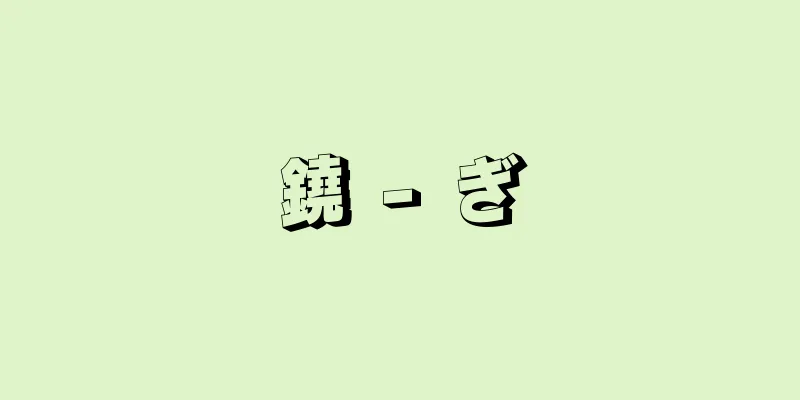Six parts - Rikubu

In China, from the Sui and Tang dynasties to the Qing dynasty, these six government offices shared responsibility for the government's administrative affairs: official affairs, household affairs, rites, military affairs, penalties, and work affairs. During the Wei, Jin, and Northern and Southern Dynasties that preceded the Sui and Tang dynasties, the Secretariat, which was the central administrative executive body, had five or six sub-officials who shared the work, but in the Sui and Tang dynasties, six departments were placed under the Secretariat. During the reign of Empress Wu Zetian of the Tang dynasty (684-705), the names of the departments were changed for a period, but after the reversion to the old system, there were no changes. During the Yuan Dynasty, the Secretariat replaced the Secretariat as the executive body, and the Six Ministries were subordinate to the Secretariat. During the Ming Dynasty, Emperor Hongwu abolished the Secretariat in 1380, making the Six Ministries directly subordinate to the emperor and realizing the emperor's dictatorship without a chancellor (the head of the Secretariat). The Qing Dynasty followed suit, but Emperor Yongle of the Ming Dynasty appointed a Cabinet Grand Scholar and effectively reinstated the chancellor, so the Six Ministries came under his command. The Personnel Ministry was responsible for selecting officials, the Household Ministry was responsible for finances, the Rites Ministry was responsible for rituals and education, the War Ministry was responsible for military administration, the Criminal Ministry was responsible for justice, and the Works Ministry was responsible for civil engineering affairs. The head of each ministry was called the Shangshu and the deputy minister was called the Si Lang. → Three Ministries → Related topic: Domain MinistrySix parts→ Related items Source : Heibonsha Encyclopedia About MyPedia Information |
|
中国,隋・唐以来,清に至るまで政府の行政実務を分担した官庁で,吏・戸・礼・兵・刑・工部の六つをいう。隋・唐に先立つ魏晋南北朝時代に中央行政執行機関であった尚書省には五曹ないし六曹の分曹があって事務を分担したが,隋・唐に至って尚書省のもとに六部をおいた。唐の則天武后の執政時代(684年―705年)の一時期には部名の変更があったが,則天武后ののちに旧に復してからは変更はなかった。元朝には尚書省にかわって中書省が行政執行機関となったため中書省に属し,明朝では洪武帝が1380年に中書省を廃止することで六部を天子に直属させて宰相(中書省の長官)をおかずに天子独裁を実現,清朝もそれを踏襲したが,明の永楽帝は内閣大学士をおいて事実上の宰相の復活となったから,六部もその指揮下にはいった。吏部は官吏の選任,戸部(こぶ)は財政,礼部は祭儀・教育,兵部は軍事行政,刑部は司法,工部は土木事務を担当し,それぞれ長官を尚書,次官を侍郎という。→三省 →関連項目藩部 六部【ろくぶ】→関連項目笈 出典 株式会社平凡社百科事典マイペディアについて 情報 |
Recommend
Periodontitis - Periodontitis
This refers to inflammation that occurs in the pe...
Reiwa Shuuge - Ryo no Shuuge
This is a compilation of commentaries on the Yoro...
Psychotria rubra
An evergreen shrub or small tree of the Rubiaceae ...
Triceratops - Torikeratopus (English spelling) triceratops
A herbivorous dinosaur discovered in a layer from...
Limitanei (English spelling)
The border defense forces deployed by the Roman Em...
Goryo Shell Mound
<br /> A shell mound site in Jonan-machi, Ku...
Tritonia crocata (English spelling)
…[Tora Saburo Kawabata]. … *Some of the terminolo...
mille passuum (English spelling)
…(4) Degrees according to the capabilities of hum...
Sayama Hills
This hill lies on the border between Tokyo and Sa...
First dream of the year
The first dream you have in a new year. The custo...
Avidin
A protein found in egg white that binds specifica...
Asahi Shell Mountain Shell Mound
A shell mound from the early Yayoi period located ...
Ninohe [city] - Ninohe
The northernmost city in Iwate Prefecture. It was ...
Undine (Hoffmann)
…The popularity of magic plays, or Singspiel, cen...
Hitting - Hitting
[1] 〘Ta Ma 5 (4)〙① To cut the opponent's body ...









